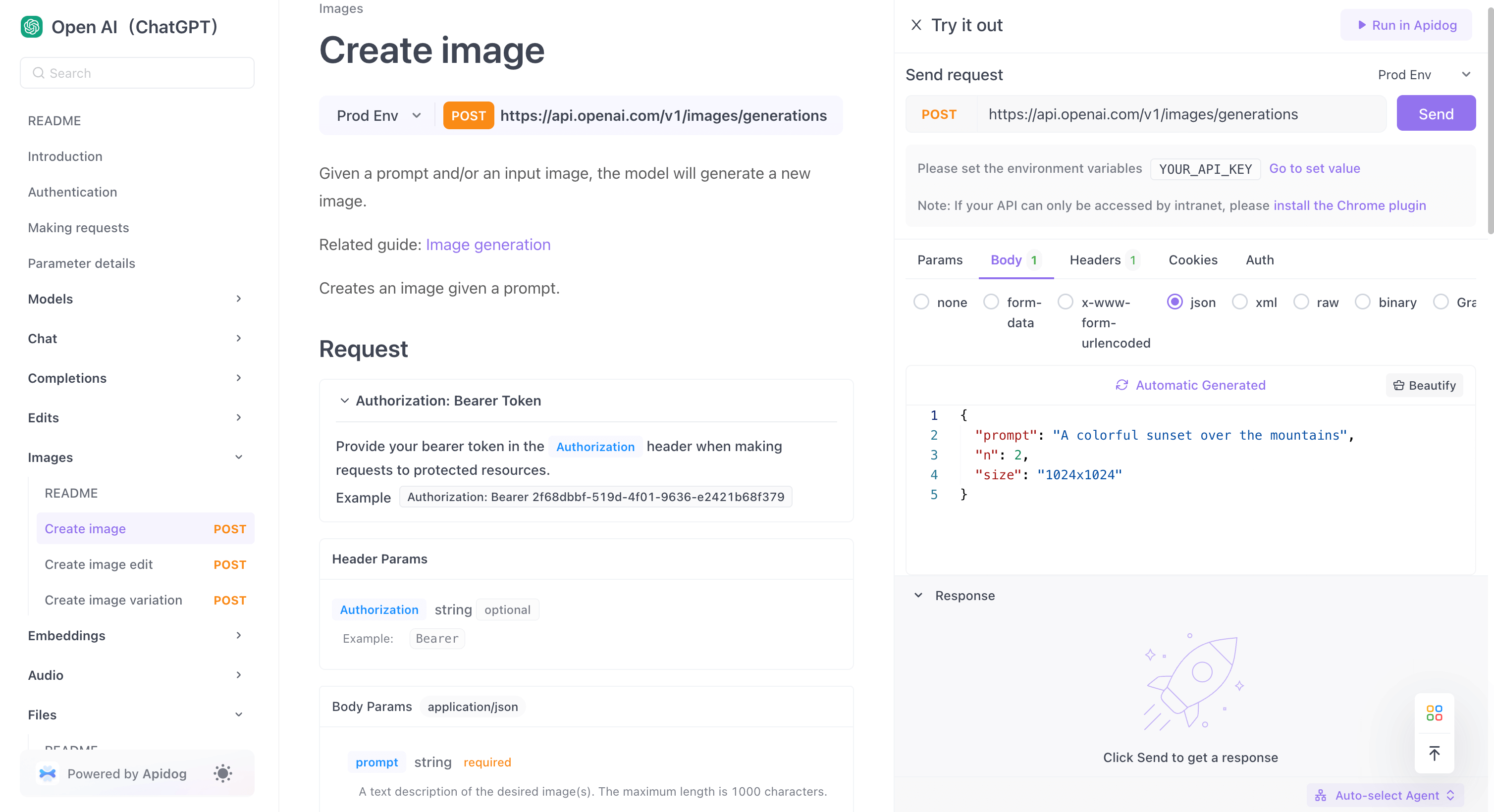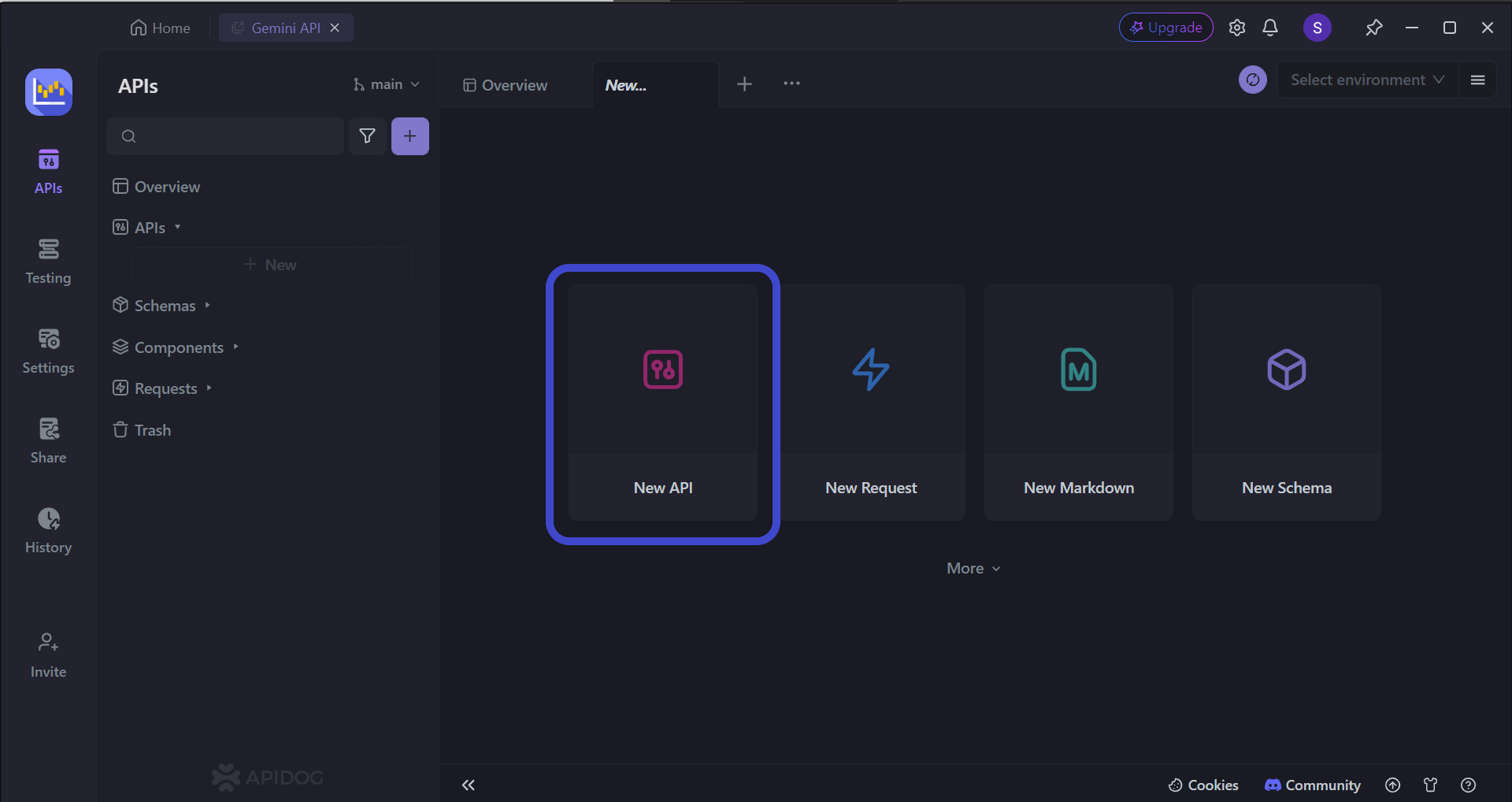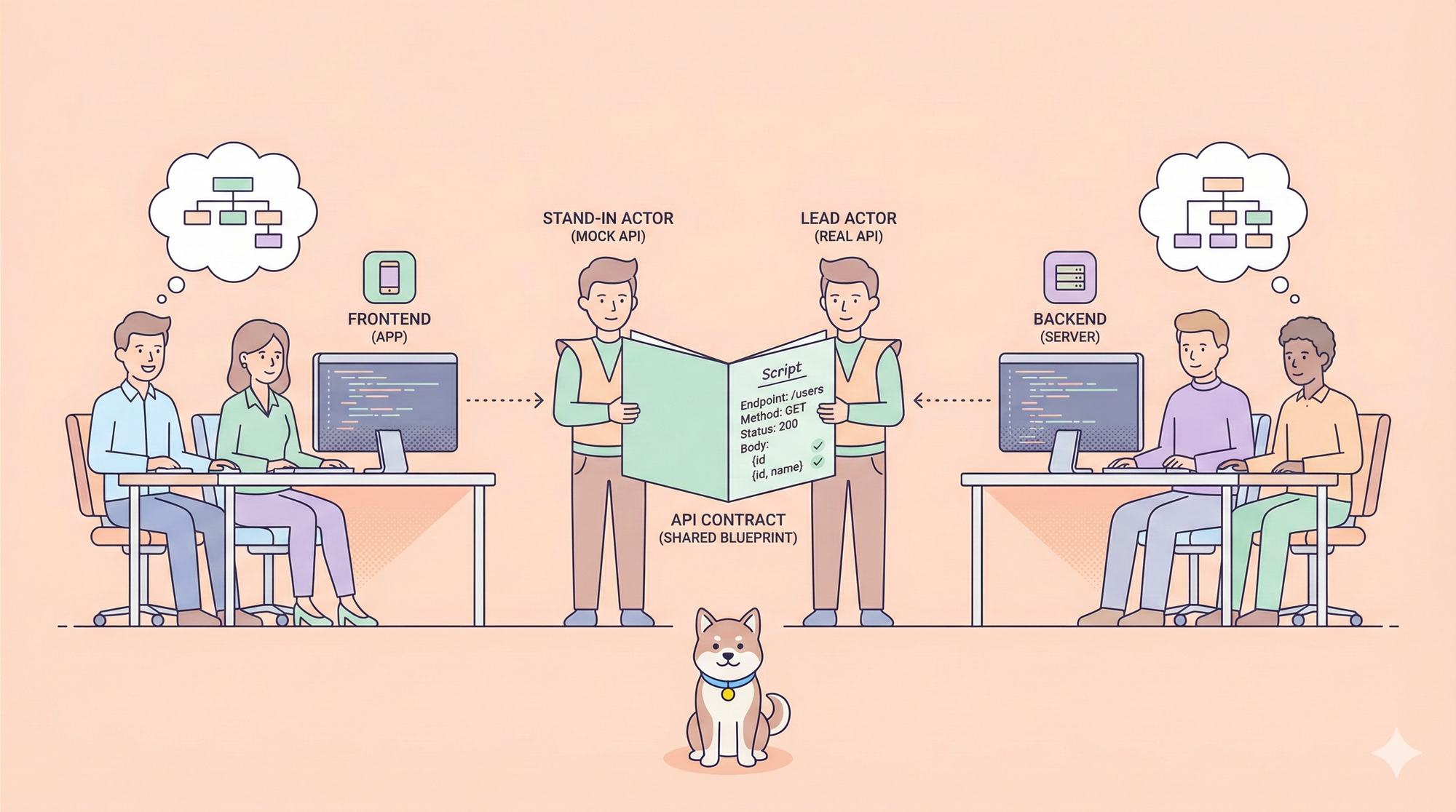The live streaming landscape has undergone a dramatic transformation in recent years. Platforms like Twitch have emerged as central hubs for entertainment, esports, and community building, attracting millions of viewers and broadcasters daily. Twitch, in particular, has fostered a vibrant ecosystem that extends beyond the traditional spectator experience.
Make sure that you invest your precious time in a worthwhile API tool. One recommendation would be Apidog, a comprehensive API development platform that equips users with the best tools and functionalities for all things API.
To understand Apidog better, click the button below - you won't regret it!

Through the implementation of a comprehensive Application Programming Interface (API), Twitch empowers developers to unlock a new frontier of interactive livestreaming functionalities. This article delves into the intricacies of the Twitch API, exploring its potential to revolutionize the way viewers engage with streamers and content.
What is Twitch?

Twitch, established in 2011, has become a dominant force in the live streaming landscape. It functions as a dedicated platform for video game content, attracting millions of viewers and broadcasters worldwide.
However, its reach extends beyond simply watching gameplay. Twitch cultivates a dynamic ecosystem that fosters entertainment, esports competition, and a deep sense of community.
Twitch's Key Aspects
Content Variety
While gaming is undoubtedly the core content on Twitch, the platform boasts a surprising amount of variety.
- Core Gaming: Popular titles like Fortnite, League of Legends, and Call of Duty dominate the viewership. However, there's a space for niche games, retro classics, and even speed runs (completing games in the fastest time possible).
- Esports: Competitive gaming finds a dedicated home on Twitch. Major tournaments for popular titles, featuring professional players and high-stakes matches, draw massive audiences, turning esports into a mainstream spectator sport.
- Creative Content: The platform extends beyond just games. Art creation, music production, and other creative endeavors find a home here. Viewers get a front-row seat to the creative process unfolding live.
- IRL Streams: The "in real life" (IRL) category allows streamers to broadcast anything from cooking demonstrations and travel vlogs to showcasing hobbies and talents. This versatility keeps the content fresh and caters to diverse interests.
Interactive Features
Live Chat: The beating heart of interaction on Twitch. Viewers can chat with streamers and each other in real-time, offering commentary, jokes, and questions. This creates a sense of community and allows viewers to directly engage with the content.
Interactive Overlays: Streamers can utilize custom overlays that integrate with the chat and gameplay. This might include polls, quizzes, or donation alerts, further enhancing audience engagement.
Virtual Items and Cheering: Viewers can purchase virtual items like "bits" to "cheer" on streamers, a way to show appreciation and support their content creation.
Community Building
Follow System: Viewers can follow streamers they enjoy, receiving notifications when they go live and staying updated on their content.
Subscriptions: Dedicated viewers can subscribe to channels for exclusive benefits like ad-free viewing, chat emotes, and subscriber-only chat rooms. This fosters a closer connection between streamers and their most loyal fans.
Clips and Highlights: Viewers can clip memorable moments from a stream and share them on social media, further promoting the streamer and their content.
Monetization
Subscriptions: Streamers can earn a portion of the subscription fees paid by viewers.
Donations: Viewers can donate directly to streamers using real money, a way to show support and appreciation.
Sponsorships and Brand Deals: Popular streamers can attract sponsorships and brand deals, further increasing their income potential.
Affiliate Marketing: Streamers can promote products or services through affiliate links, earning a commission for any sales generated.
Accessibility and Tools
Freemium Model: Twitch is free to use for both viewers and streamers, with subscriptions and donations acting as optional monetization tools.
Streaming Software: A variety of third-party software options allow anyone to start streaming on Twitch with minimal technical knowledge.
Developer Tools: The Twitch API allows developers to create custom applications, extensions, and tools that interact with the platform, further enhancing functionality and user experience.
By combining these key aspects, Twitch has established itself as a dominant force in the live streaming world. It fosters a unique environment where entertainment, competition, creativity, and community thrive, captivating audiences and empowering content creators of all levels.
Potential Benefits From Using the Twitch API
The Twitch API opens a treasure trove of possibilities for developers, empowering them to create innovative experiences that extend far beyond simply watching streams. Here's a glimpse into the potential benefits and ideas that can be sparked by leveraging this powerful tool:
Enhanced Viewer Engagement
Interactive Overlays and Tools: Develop custom overlays that integrate with the Twitch chat and gameplay. Imagine creating real-time polls, quizzes, or interactive games directly within the stream, boosting audience participation.
Stream Information and Analytics: Build applications that display real-time stream statistics, track viewer demographics, or analyze chat sentiment. This data can be valuable for both streamers and viewers, providing insights into audience preferences and engagement patterns.
Next-Level Chat Experiences: Design chatbots or moderation tools that enhance the chat experience. Imagine chatbots programmed to answer common questions, translate languages, or filter out inappropriate content.
Streamlining Streamer Workflows
Automated Content Creation: Develop tools that automate tasks like generating highlights, creating social media clips, or managing streamer schedules. This frees up streamers to focus on creating high-quality content and interacting with their audience.
Customizable Alerts and Overlays: Empower streamers to create custom alerts triggered by donations, subscriptions, or follower milestones. Design dynamic overlays that showcase streamer information, social media links, or upcoming events.
Data-Driven Optimization: Build tools that analyze a streamer's performance metrics, providing insights into viewer demographics, peak streaming times, and content preferences. This data can be used to optimize streaming strategies and attract a wider audience.
Expanding the Twitch Ecosystem
Mobile and Desktop Applications: Develop mobile or desktop applications that complement the Twitch viewing experience. Imagine applications that allow viewers to discover new streamers, track their favorite channels, or interact with the chat on the go.
Community-Driven Tools: Foster the creation of community-driven tools like streamer discovery algorithms, recommendation engines, or curated content collections. This can help viewers find content they'll enjoy and expand their engagement within the Twitch ecosystem.
Esports and Competitive Gaming Tools: Create applications or overlays that enhance the esports viewing experience. Imagine tools that display live match statistics, player information, or interactive draft viewers for strategy games.
These are just a few examples of the potential benefits and ideas that the Twitch API unlocks. With a little creativity and technical expertise, developers can leverage this powerful tool to shape the future of live streaming, creating innovative experiences for both viewers and streamers alike.
Step-by-step Guide to Using the Twitch API
Step 1 - Log In to Your Twitch Account and Enable Two-factor Authentication

Firstly, log in to your Twitch account - or sign up for one if you do not have an account yet. Then, click the button below.


Proceed by going to the Security and Privacy Settings for your Twitch account, and scroll down until you see the Set Up Two-Factor Authentication button, as shown in the image above.
Step 2 - Enter Twitch Developers Console


With the button above or this link, enter the website to log in to the Twitch Developers Console.
Step 3- Register a Twitch Application

Under the Applications section, find the + Register Your Application button, as shown in the image above.

Proceed by providing your application details, the more important component being the OAuth Redirect URL. Make sure that it is exactly as you require.
Step 4 - Obtain Twitch App Client ID

On the Console page, you should now see your Twitch app under the Developer Applications section. Click the Manage button.

Scroll down until you can see your Client ID. Copy this to your clipboard as you will be using it soon.
Step 5 - Choose Go or Node.js to Obtain OAuth Access Tokens
Lastly, depending on which programming language you prefer, select either Go or Node.js to obtain the OAuth access tokens for your Twitch Application.
For more information regarding how to set up the Twitch API, click the button below or this link.

Apidog - Getting OAuth Token For Your Twitch API
A potentially powerful tool for your app development arsenal can be Apidog, an all-in-one API development tool complete with the necessary tools and functionalities for professional API development and implementation.

With a simple and intuitive interface, anybody can quickly learn and adjust to the new development environment. Reap a streamlined workflow with Apidog swiftly!
Obtaining Twitch API OAuth Token

Firstly, download Apidog and open a new project. Here, click on the purple + box and select Import cURL. Copy and paste the following code into the pop-up window.
curl -X POST 'https://id.twitch.tv/oauth2/token' \
-H 'Content-Type: application/x-www-form-urlencoded' \
-d 'client_id=<your client id goes here>&client_secret=<your client secret goes here>&grant_type=client_credentials'Remember to change the client_id and client_secret variables to the ones that you have.

If done successfully, you should have three variables under the Body section, which are client_id, client_secret, and grant_type. You can then proceed to hit the Send button to obtain the access token.

On the Body section that displays the response, you should now be able to see your access token.
Testing Get Users Twitch API Call With Apidog
Now that we have an active Twitch API access token, let's try to make a request.
curl -X GET 'https://api.twitch.tv/helix/users?login=twitchdev' \
-H 'Authorization: Bearer jostpf5q0puzmxmkba9iyug38kjtg' \
-H 'Client-Id: wbmytr93xzw8zbg0p1izqyzzc5mbiz'Repeat the cURL import steps with the code above, and remember to change the access code and client_id to the one that belongs to your application. Once you have imported the cURL code, immediately press the Send button.

And there you have it - Twitch API's response for the Get Users request!
Use API Hub to Find Alternative APIs For Free!
If you have tried to use the Twitch API and feel that it is not what you expected it to be, you can always find another API to work with for your projects. Let us introduce Apidog's online API library, which is called API Hub.

On API Hub, you can search for numerous APIs available for implementation. With a vast amount ready for adoption, it is almost certain to find an API that matches your requirements.

The picture above demonstrates the screen you can see for the OpenAI API available through API Hub. Here, you can try out the API, or get redirected to the Apidog desktop application if you feel more comfortable there, all without having to pay a single penny.
As usual, make sure that you understand how to obtain the respective API key for each new API that you will try.

Once you have all the necessary components, hit the Send button! You should be able to see sample responses returned from the respective API you are viewing.
Cannot Find the API You Want? Design One Yourself!
If you really cannot find an API that fits your application, you can create one yourself with Apidog.

Start by press the New API button, as shown in the image above.

This section explains the key parts you need to understand to use a REST API. These parts are:
- Communication methods: These are basically commands like GET, POST, PUT, and DELETE that applications use to interact with the API.
- Endpoints (URLs): These are specific web addresses that act like entry points for different functionalities within the API.
- Parameters: These are details to be included in the URL to target specific data within the API.
- Functionality breakdown: This is an explanation of what each endpoint within the API does.
Conclusion
The Twitch API presents a vast landscape of opportunity for developers. By delving into its functionalities, creators can craft interactive experiences that extend far beyond the traditional stream. Imagine a world where viewers can directly influence the course of a stream, or where streamers have access to real-time analytics to optimize their content.
The Twitch API empowers this potential, fostering a future of interactive entertainment where viewers and streamers are active participants in a continuously evolving live streaming experience. As the live streaming landscape matures, the potential applications of the Twitch API will undoubtedly continue to flourish, shaping how we experience and interact with this dynamic form of entertainment.





